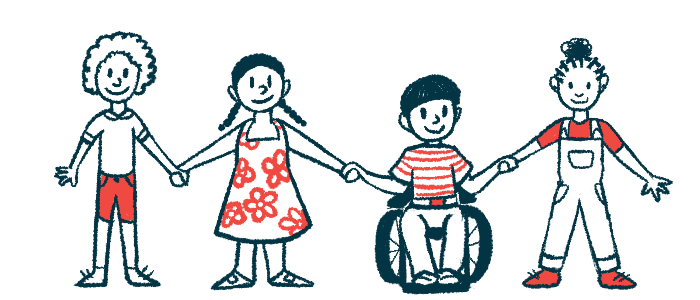Current therapies aid motor function in SMA type 1 children in Spain
Study examines current SMA treatments and their effects on 51 children in Spain

Current therapeutic approaches have helped to improve motor function in the majority of children with spinal muscular atrophy (SMA) type 1 in Spain, a study reports.
The study, “Clinical and Functional Characteristics of a New Phenotype of SMA Type I among a National Sample of Spanish Children: A Cross-Sectional Study,” was published in the journal Children.
SMA type 1 is the most common type of SMA, accounting for about 60% of cases. Symptoms can be apparent at birth or emerge within the first six months, and include low muscle tone, failure to meet developmental motor milestones like sitting up or rolling over, and a lack of reflexes.
New disease-modifying therapies available
Given the recent availability of new disease-modifying therapies, researchers set out to examine the current characteristics, or the new phenotypes, of most SMA type 1 patients living in Spain.
“The current panorama of SMA type I presents a new phenotype which is essential to obtain real-life outcome data to enhance our understanding of this disorder,” the researchers wrote.
All 60 SMA type 1 families in the national registry program of SMA patients were recruited, of whom 51 agreed to participate (85%). Patients (20 girls, 31 boys), ages 3 months to just over 15 years, were visited at home for standardized assessments. Primary caregivers also answered a comprehensive questionnaire of patients’ disease-related characteristics.
According to the results, symptom onset occurred before the first month in 16 children, before three months in 22, and between 3 and 6 months in 13.
In total, 39 children (76.5%) were treated with Spinraza (nusinersen), eight (15.7%) received both Spinraza and Zolgensma (onasemnogene abeparvovec), two (5.9%) were given Zolgensma, and two (5.7%) Evrysdi (risdiplam).
These findings may enable the professionals involved in the care of these patients to improve their interventions in terms of prevention and rehabilitation measures for these children.
Tracheostomy, to install a breathing tube, was performed in 11 (21.6%), with five needing constant external breathing support. A cough assist device was used in 42 children (82.4%), a BiPAP machine in 37 cases (72.5%), and an aspirator in 31 (60.8%).
More than half were fed by mouth (56.9%), one-third by feeding tube (33.3%), and the remaining (9.8%) by a mix of both. Gastroesophageal reflux was reported in four cases (7.8%).
Two-thirds of patients had scoliosis (66.7%), a sideways curvature of the spine, and/or a dislocated hip (68.6%). About half (49%) had some form of surgical intervention, and three of them had bone fractures.
Regarding physical abilities, 39 (76.5%) had head control, and 34 (66.7%) could sit independently. The ability to stand with support was reported in 18 (35.3%) cases, and the ability to walk with help in 12 (23.5%).
No differences were seen between patients with different ages of symptom onset in terms of motor milestones reached, the type of feeding, or the use of mechanical ventilation.
On the Hammersmith Infant Neurological Examination, an assessment of motor function, all patients achieved a “good score,” with a median of 16. Scores range from zero (no impairment) to 26 (severe impairment).
Scores on infant test ‘much higher than those previously recorded’
The median score on the Children’s Hospital of Philadelphia Infant Test of Neuromuscular Disorders was 48 points, with a total possible score of 64 (fully functional). “These values are much higher than those previously recorded,” the researchers noted.
The Hammersmith Functional Motor Scale Expanded (HFMSE) median score was 19 out of 66 points, as measured in 39 patients, in which lower scores indicate poor motor function. HFMSE assessed motor features such as sitting, crawling, standing, kneeling, jumping, and stair-climbing.
“This scale measured the motor ability of children who are capable of greater motor performance than children classically classified as having SMA type I,” the team wrote.
The revised Upper Limb Module (RULM), which assessed upper limb function in 27 patients, showed a median of 16 points. A maximum score of 37 indicates good upper limb function.
Regarding HFMSE and RULM scales, these findings “show the need to include them in the routine care of patients with the new SMA type I phenotype,” the researchers wrote.
For non-drug therapies, all children received physiotherapy, 45 (88.2%) speech therapy, 13 (25.5%) occupational therapy, and eight (15.7%) underwent psychological therapy.
“These findings may enable the professionals involved in the care of these patients to improve their interventions in terms of prevention and rehabilitation measures for these children,” the researchers concluded.









